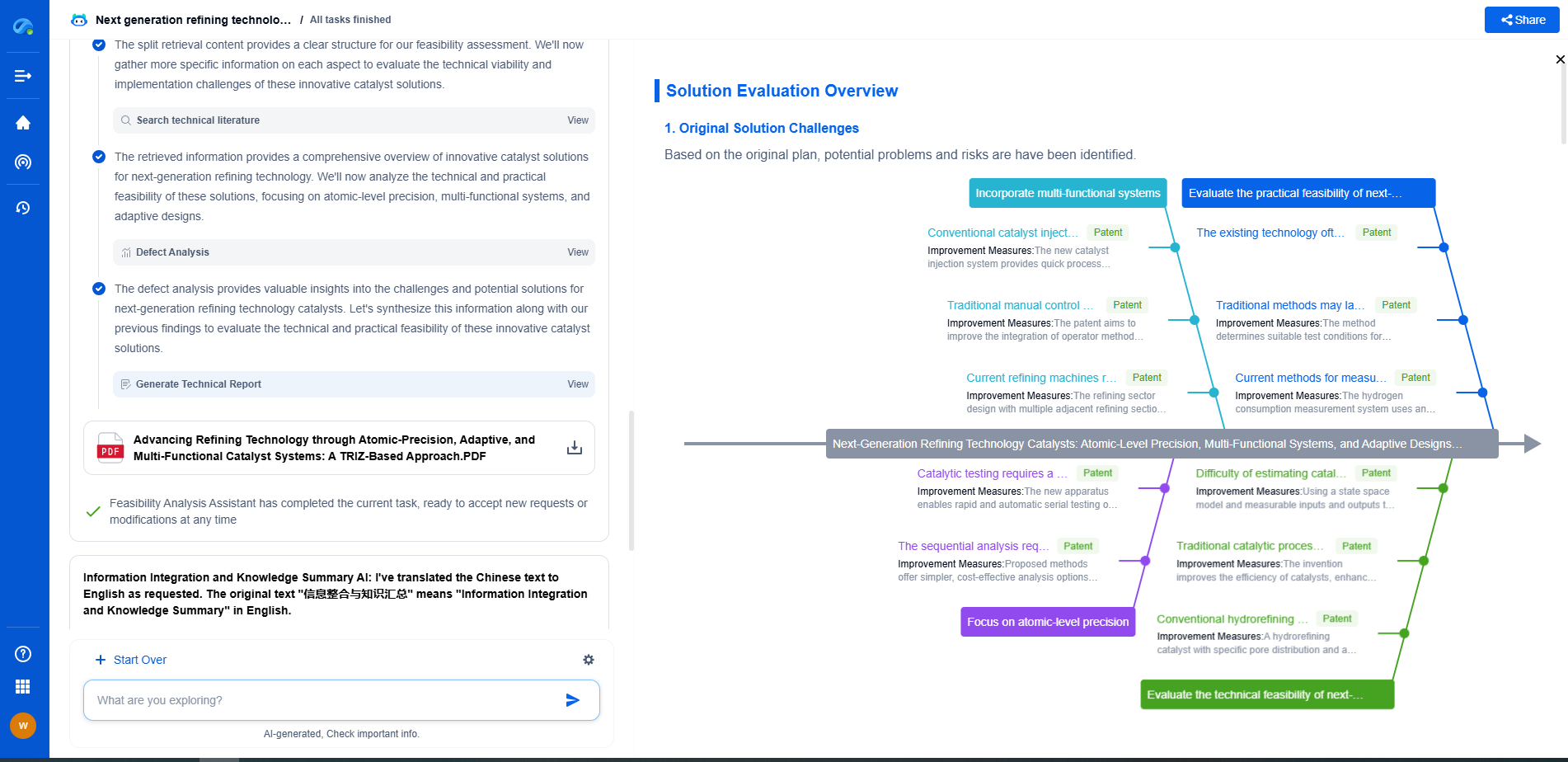What is a Hall effect sensor used for in robotic joints?
JUN 26, 2025 |
Hall effect sensors are named after Edwin Hall, who discovered the Hall effect in 1879. These sensors work on the principle that when a magnetic field is applied perpendicular to the flow of electric current in a conductor, a voltage difference is generated across the conductor. This voltage, known as the Hall voltage, is proportional to the strength of the magnetic field. Hall effect sensors are used to detect the presence of a magnetic field and measure its strength. They are available in various forms, including linear output sensors and switch-type sensors, making them versatile for different applications.
**Role of Hall Effect Sensors in Robotics**
In robotics, precision and accuracy are critical, especially in the movement and control of robotic joints. Here, Hall effect sensors play a vital role. These sensors are often employed in joint actuators or servo motors to provide precise feedback on the position and speed of the joint. By continuously monitoring the magnetic field associated with the motor's rotation, the Hall effect sensor provides real-time data to the control system, allowing for smooth and accurate joint movements.
**Position Sensing in Robotic Joints**
One of the primary applications of Hall effect sensors in robotic joints is position sensing. In robotics, knowing the exact position of a joint is crucial for tasks that require high precision. Hall effect sensors provide contactless position sensing, meaning there is no mechanical wear and tear associated with their operation. They can be integrated into the joint mechanism to detect the rotational or linear position of the joint, ensuring that the robot can accurately reach its target position every time.
**Speed and Direction Detection**
Besides position sensing, Hall effect sensors are also used to detect the speed and direction of joint movement. In a robotic joint, the sensor can measure the rotational speed of a motor shaft or actuator. By evaluating the rate of change in the magnetic field, the sensor provides valuable feedback on how fast a joint is moving. Additionally, by using multiple Hall effect sensors, the direction of movement can be determined, which is essential for tasks involving complex movements and manipulations.
**Benefits Over Traditional Sensors**
Hall effect sensors offer several advantages over traditional position and speed sensors. Firstly, they are contactless and have no moving parts, which significantly reduces maintenance needs and extends the sensor's lifespan. They can operate in harsh environments with dust, dirt, and moisture, making them ideal for industrial applications. Additionally, Hall effect sensors are immune to vibrations and shocks, ensuring reliable performance in dynamic robotic systems.
**Applications in Collaborative Robots**
In collaborative robots, or cobots, which are designed to work alongside humans, precision and safety are paramount. Hall effect sensors contribute to these aspects by providing accurate joint position information and helping prevent collisions through precise motion control. By ensuring the robot's joints move predictably and accurately, Hall effect sensors help maintain a safe working environment for human operators.
**Future Trends and Developments**
As robotics continues to evolve, the role of Hall effect sensors in robotic joints is expected to grow. Future developments may include miniaturization of sensors for more compact robotic designs and enhancements in sensor sensitivity and accuracy. Additionally, with the integration of advanced algorithms and AI, Hall effect sensors could offer even more precise control and feedback mechanisms for robotic systems, enabling more complex and autonomous operations.
In conclusion, Hall effect sensors are indispensable components in the functioning of robotic joints, providing critical data that ensures the precision and reliability of robotic movements. Their ability to offer contactless and accurate sensing makes them ideal for a range of applications, from industrial robots to collaborative systems. As technology advances, these sensors will likely continue to play a crucial role in the advancement of robotics.
Ready to Redefine Your Robotics R&D Workflow?
Whether you're designing next-generation robotic arms, optimizing manipulator kinematics, or mining patent data for innovation insights, Patsnap Eureka, our cutting-edge AI assistant, is built for R&D and IP professionals in high-tech industries, is built to accelerate every step of your journey.
No more getting buried in thousands of documents or wasting time on repetitive technical analysis. Our AI Agent helps R&D and IP teams in high-tech enterprises save hundreds of hours, reduce risk of oversight, and move from concept to prototype faster than ever before.
👉 Experience how AI can revolutionize your robotics innovation cycle. Explore Patsnap Eureka today and see the difference.
- R&D
- Intellectual Property
- Life Sciences
- Materials
- Tech Scout
- Unparalleled Data Quality
- Higher Quality Content
- 60% Fewer Hallucinations
Browse by: Latest US Patents, China's latest patents, Technical Efficacy Thesaurus, Application Domain, Technology Topic, Popular Technical Reports.
© 2025 PatSnap. All rights reserved.Legal|Privacy policy|Modern Slavery Act Transparency Statement|Sitemap|About US| Contact US: help@patsnap.com

